“It’s okay to love your marketing stack. Just don’t love your marketing stack.”
That’s what was running in the back of head last week, as I was moderating a “Show Us Your Marketing Stack” panel at the B2B Marketing Innovation Summit run by Demandbase in San Francisco. Three top marketing executives — Susan Ganeshan, CMO of Clarabridge; Kristin Hersant, VP marketing at Livefyre; and Franz Aman, SVP of brand and demand at Informatica — had put together one slide each, a high-level view of their respective marketing stacks, and had agreed to share them with the audience.
My plan for the panel was to give each of them 2-3 minutes at the start of the session to briefly highlight the way they organized their stacks. We’d then have the bulk of the 45-minute session left to talk about management and governance issues.
Boy, did I underestimate that opening.
Instead, as they started to describe their stacks, they couldn’t help but enthusiastically dive into more of the details about which products they used and why. With typically well over a dozen products identified in each stack, well, their walk-throughs went from being merely opening remarks to almost the entirety of the session.
And, man, were they passionate about their tools and proud of what they had built.
I would have cut them off, but looking out into the packed audience, I could see that they were rapt. You could hear enthusiastic murmurs of approval — and sometimes outright whooping and clapping — when people’s favorite products were mentioned. This was an entire room full of marketers who loved their software.
In response to a question from the audience about which was the one can’t-live-without-it, changed-your-life tool, Franz just shook his head and replied, “They’re all my children. I can’t choose just one.”
It was very clear that, while there is a diverse set of products in each of these stacks, they are not just piles of shiny objects that were randomly collected in fleeting moments of fascination. Each piece of the stack had a specific purpose, and the panelists were able to eloquently explain them. And if you tried to talk them out of one, I believe that they would have channeled Charlton Heston, “When you pry it from my cold, dead hands…”
It was also very clear that these stacks aren’t consolidating down to a single “suite” anytime soon. In fact, most of them had multiple of the major marketing cloud vendors represented in their diagrams, such as Salesforce for CRM, Marketo for email and marketing automation, Adobe for the website, and Oracle for a data management platform (DMP).
Pretty compelling evidence that it’s a heterogeneous marketing technology world.
Now, to be fair, I do feel obligated to point out that each of the panelists works for a software company — in fact, all marketing-related software companies. So their deep embrace of these technologies is no doubt supported by the culture of their organizations.
But still, the technology-powered capabilities they have lovingly crafted aren’t unique to the software business. Listening to how they use these different products in a cohesive strategy, it would be hard to deny that such tech-infused marketing is quickly becoming competitive table stakes.
We did squeeze in a few, quick management and governance questions at the very end.
Are marketing technology budgets growing? Yes — although faster for revenue-related capabilities than more internal efficiency improvements. Why? Because these tools provide tremendous leverage. Marketers can get more done and have greater impact. And increasingly, they can use the data to prove it. At least for these panelists, software was clearly more of a “sure thing” than any other investment.
Who runs this software? It’s almost all managed by marketing. In most cases, marketing operations has day-to-day responsibility for the tools. Although there was acknowledgement that more technical “marketing technologist” talent would be helpful in getting more out of the software.
Franz emphasized the importance of collaborating with IT the most, and it’s probably not coincidental that his stack had the most logical architecture from a technical perspective. He says that they insist on being able to get customer data out of the different products they use and into their own, vendor-independent data warehouse. He was very proud of that — and the fact that this enabled them to switch from one marketing automation platform to another in just 51 days (which for a company of Informatica’s size is indeed impressive).
If I’m a marketing software vendor, how should I contact CMOs to pitch my product? Short answer: don’t call them, they’ll call you. Franz said that if you want to get his attention, produce great content for the topics he’s searching for — hey, +1 for inbound marketing — and then he’ll reach out when he’s ready.
But whatever you do, for heaven’s sake, DON’T EVER CALL THEM UNINVITED ON THEIR MOBILE PHONE. As Kristin said bluntly, if you do that, “I just want to punch you in the face.”
Top photo credit: Randy Giusto. Thank you to Franz, Kristin, and Susan for permission to share their marketing technology stack diagrams.
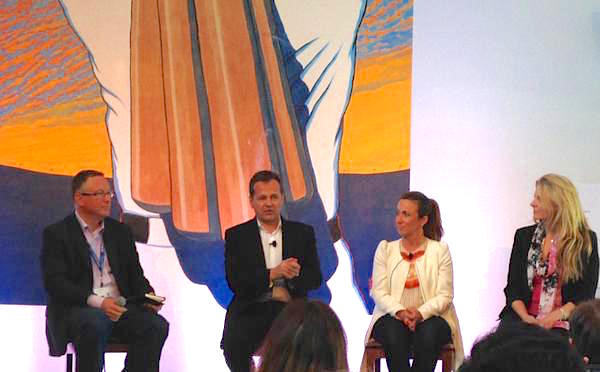
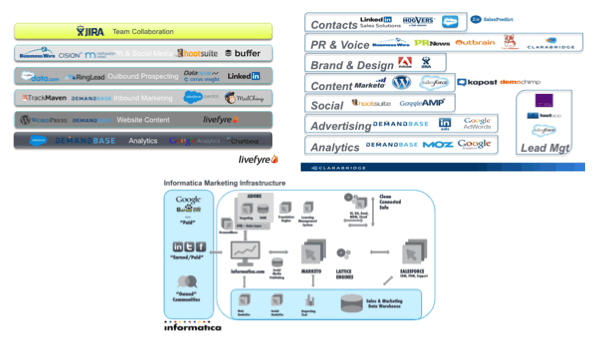

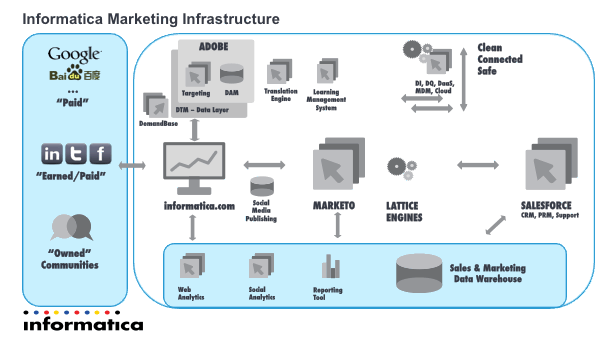
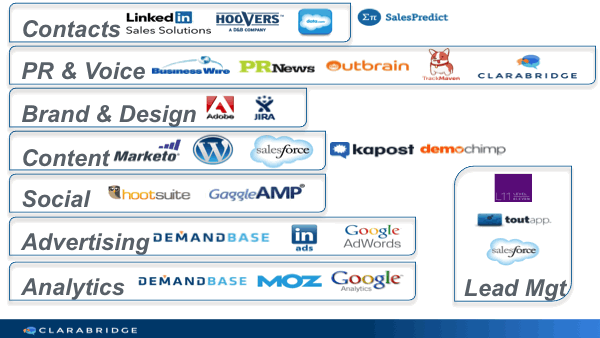
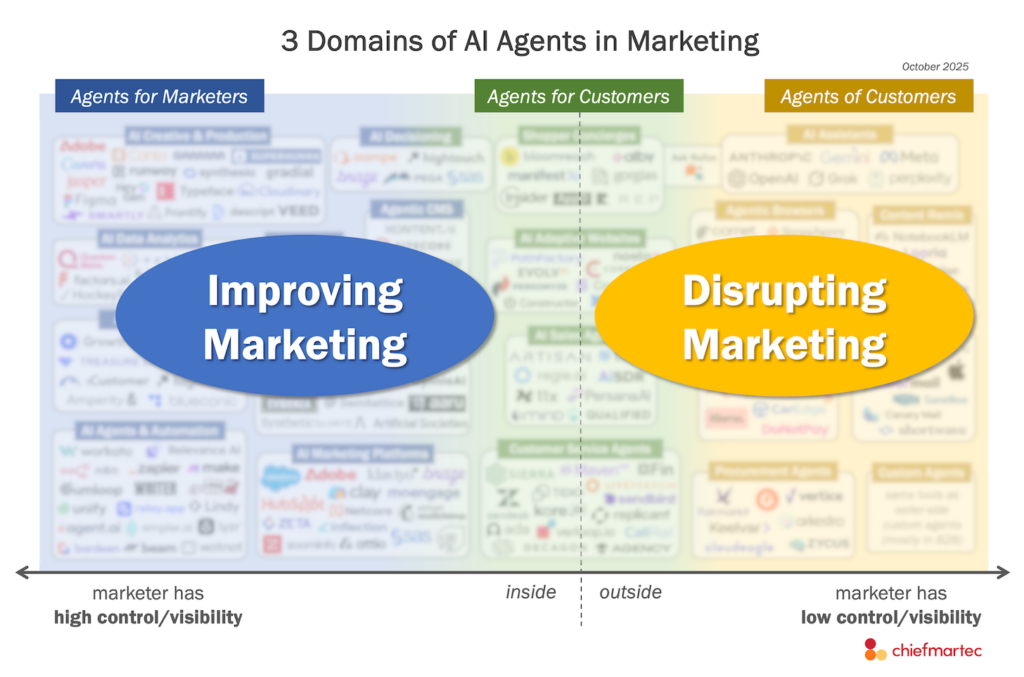


Were they able to talk that passionately about their audience/segments? Their competition? The market, in general?
I don’t doubt that they’d be able to talk passionately about all of those. These are super smart folks who clearly care very deeply about their work and its impact on their companies and customers.
However, since this WAS a session about one’s marketing technology stack, it kind of makes sense that we would focus on that topic. I wouldn’t make the leap of inference that because they are proud of their marketing technology stacks that somehow that’s to the exclusion of the other facets of successful marketing leadership.
On the contrary, the clarity of purpose they explained for each of the components in their stacks seemed entirely motivated by the difference they could make on their business.
Glad to hear that because working with marketers in other sectors/markets, there seems to be more of an ‘either or” reality. They either know the technology or the audience or the competition or the market…
And I apologize if my initial comment gave the impression that I was “leaping”…I was asking. Really. 🙂
It’s definitely an important point to raise. Marketers need to synthesize all of these things. Frankly, it’s kind of awe-inspiring for me to see those who are able to do it well. The ideal CMO these days is really a superhero. Even getting close to that ideal is impressive.
I think one thing that impressed me about this panel is that these were all CMO-level executives. I wouldn’t have necessarily expected them to know the structure of their technology stacks as deeply as they did, given all the other things on their plates.
As an aside, I love Franz’s title: SVP of brand and demand. 🙂
Great article. Did they mention an integration tool of choice? Did one company seem to have application integration better figured out then the others?
Great post! Very comprehensive as it gives the full picture of tools and processes for how marketers’ minds might work. Thanks for including RingLead! We’re psyched to be stack-worthy.
I guess for one company the integration tool of choice would have been Informatica 😉
Nice post, thanks for sharing. I’d venture a guess that most companies who’ve built a remarkable marketing stack are pretty obsessed with how well (or poorly) it’s turned out. Here’s ours:
https://www.cbinsights.com/blog/saas-marketing-stack/
CB Insights is also a software/data company, known as the Bloomberg of private companies. We track venture capital financings and exits globally.
That’s awesome, Emily — thanks for sharing!
Thanks for the tweet, Scott! Made my day 🙂